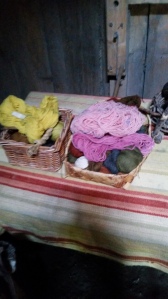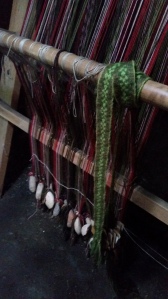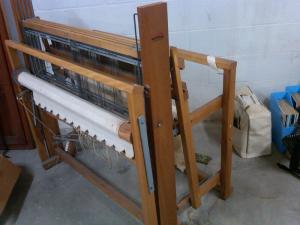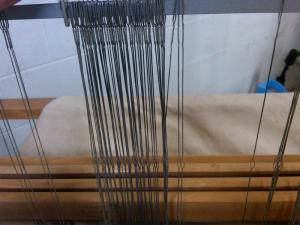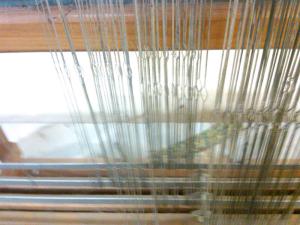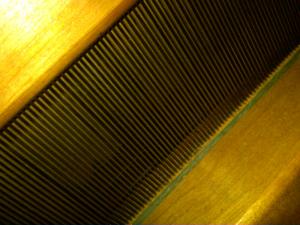One of my favorite parts of this trips was seeing an Iron Age farm. Man, times were hard. The people lived in longhouses with sod roofs.
Peopel lived in the south, animals in the north, so the heat from the animals came down, Also the smells and other less nice things. I’ve read about the custom of keeping the animals in the house. Diseases that began in animals then jumped to humans.
But I digress.
I was very interested in the loom. The weaving was done top to bottom. The warp threads at the bottom were hung with weights. Weaving, which for me is a fairly quiet operation, must have been noisy.
One of the things I found interesting was the green tape and the interpreter’s green shirt. I knew from my research for “Death of a Dyer” that there was no green dye in Europe. In Peru they used some plant but that had not been discovered in Europe. But they did have yellow, blue (indigo) and red (madder).
So, where did they get green? Here is a better shot of the green tape.
I asked the interpreter and he referred me to the Archaelogy Department. Answer: they over dyed, beginning with yellow and then blue.
For pictures of the dress and shoes I refer you to the blog by ArchaeoFox.


